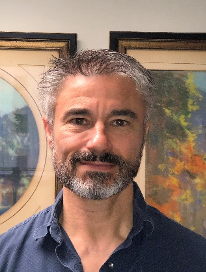
Welcome to the Needs Assessment TIG’s week on AEA 365! I’m Lisle Hites, Chair of the Needs Assessment TIG, Associate Professor in Community Medicine and Population Health at the University of Alabama. On behalf of all of us in the Needs Assessment TIG, I hope you enjoy this week’s blog entries and we look forward to seeing you at our sessions at AEA 2020. We also hope that you are all staying informed and making good decision regarding your own health and that of the community as we weather the COVID-19 pandemic.
In past years I talked about the complexity of assessing needs in communities, especially in communities that are medically underserved. Not surprisingly, these same disadvantaged groups (e.g. Southern rural African American populations) are currently suffering disproportionately from COVID-19. Why? Well, if you want to know what a community needs, you’ll conduct a thorough and rigorous Needs Assessment (for more detail on this process, start with Altschuld & Kumar’s 2010 Sage book “Needs Assessment”). What if you don’t have time? What if community needs are newly emergent? With COVID-19, information flow has provided many of the clues necessary to understand community needs by giving a rapid stream of impact and outcome numbers that help us to see into our population and identify those most at need. You may be thinking, “Well, that was easy”. But does it tell enough of the story? That’s the true power of a well-crafted needs assessment, you get a complete story.
Completing the Story: As with many less-than-thorough needs assessments, assessing needs from a stream of demographic and outcome driven population data can leave us with more questions than answers. I say this because that’s where I am right now, struggling to help public health professionals address the needs of regional populations. “What” I see in the great information stream is the “damage”. The other piece we need in order to complete the picture is the “why”. Here’s where you can do a lot with a little. If you find yourself already with a good picture of what is impacting a particular population, to complete the needs assessment picture, quickly ask that population a few clarifying questions. I say quickly, because you will be generating just-in-time snapshots in a rapidly changing environment to help guide interventions. For example, ask them why they are not social distancing. Finally, provide some balance to your “why” questions by asking them “how”. If change will be driven through messaging, you might want to ask “how” best to reach them and “who” they would listen to.
Lessons Learned:
- Needs assessments can be quick turnaround, or just-in-time, providing a situational snapshot that may only be valuable for a very short period of time.
- Make sure your needs assessment gives you a complete picture, especially if it is intended to lead to immediate action, by asking not just “what” and “why”, but also “how” to affect change.
The American Evaluation Association is celebrating Needs Assessment (NA) TIG Week with our colleagues in the Needs Assessment Topical Interest Group. The contributions all this week to aea365 come from our NA TIG members. Do you have questions, concerns, kudos, or content to extend this aea365 contribution? Please add them in the comments section for this post on the aea365 webpage so that we may enrich our community of practice. Would you like to submit an aea365 Tip? Please send a note of interest to aea365@eval.org. aea365 is sponsored by the American Evaluation Association and provides a Tip-a-Day by and for evaluators.

Thanks for this Lisle, it’s always great to read more about needs assessments. If folks are interested, I’ve put together a free tip sheet on the “6 D’s of Needs Assessments” that digs into the “how” that you mention above (Deficits, Develop, Describe, Desires, Duplication, and Demand) at http://www.communitysolutions.ca.